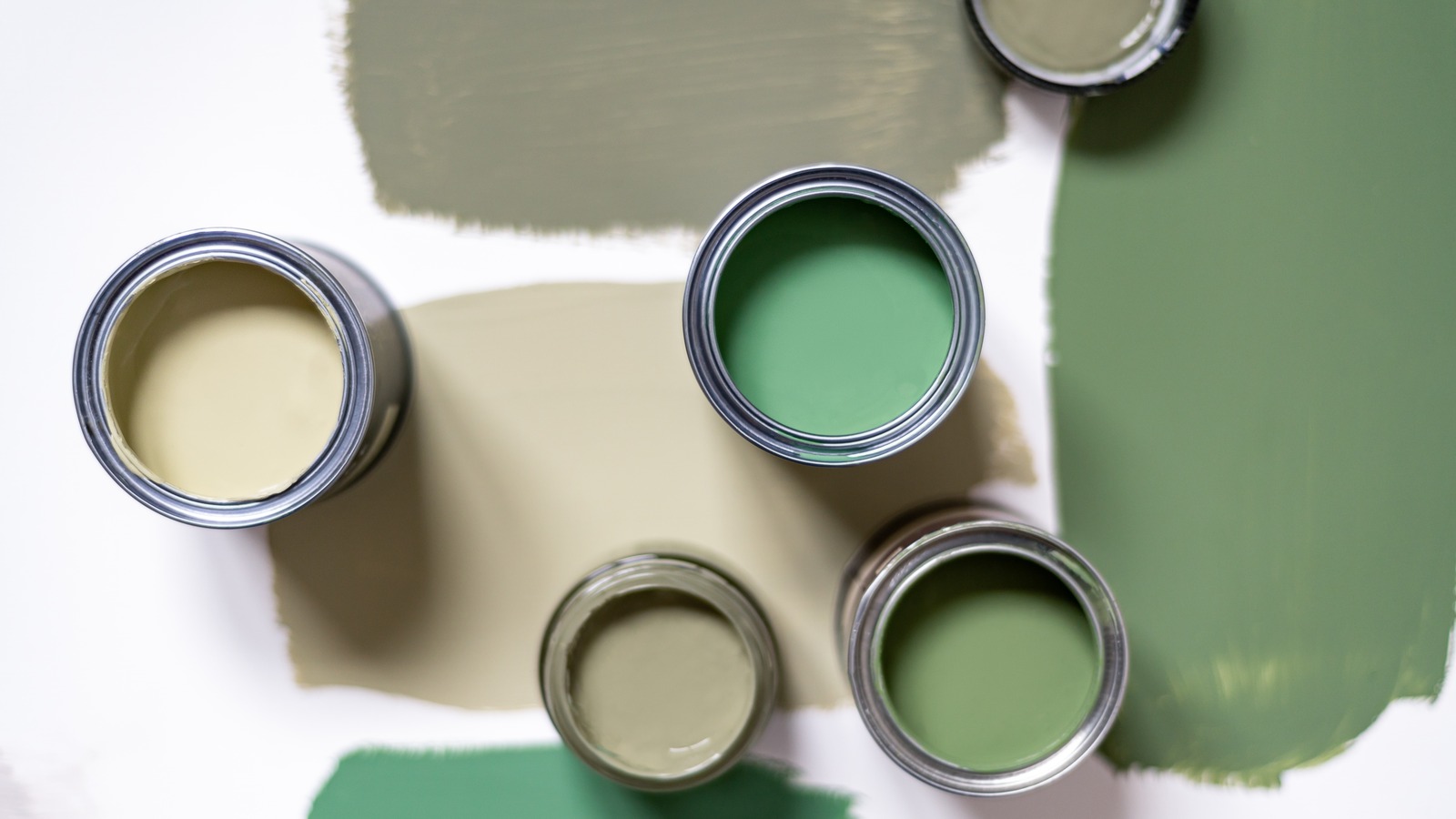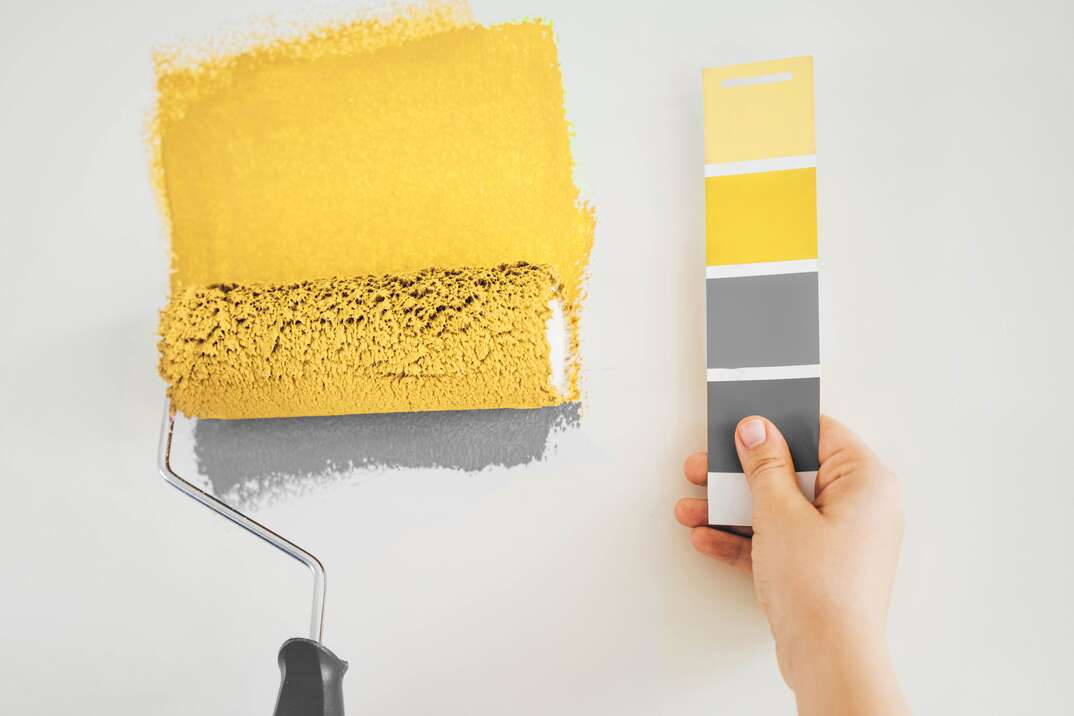How to match wall paint? Matching wall paint can greatly enhance the overall aesthetic and ambience of a room. Whether you are painting a single wall or an entire space, selecting the right paint color and coordinating it with other elements is essential. In this comprehensive guide, we will explore various factors to consider when matching wall paint, including the purpose of the room, lighting conditions, existing décor, and color harmonies. By understanding these considerations and following the recommended steps, you can confidently choose the perfect wall paint color that complements your space and creates the desired atmosphere.

Consider the Purpose of the Room:
The purpose of the room plays a significant role in selecting the appropriate wall paint color. Consider the following guidelines:
- Relaxing Spaces: For bedrooms or areas intended for relaxation, opt for calming and soothing colors such as soft blues, greens, or warm neutrals like beige or taupe.
- Energizing Spaces: In spaces where energy and vibrancy are desired, such as playrooms or home gyms, consider brighter and bolder colors like yellows, oranges, or reds.
- Social Spaces: Areas intended for socializing, such as living rooms or dining areas, can benefit from warmer and inviting colors like neutrals, warm grays, or earthy tones.
Assess Lighting Conditions:
The lighting conditions of a room can greatly influence the way paint colors appear. Consider the following lighting factors:
- Natural Light: Rooms with abundant natural light allow for a broader range of paint color options. Keep in mind that natural light can change throughout the day, affecting the perceived color tones.
- Artificial Light: Rooms that rely heavily on artificial lighting may require consideration of how different light bulbs affect the appearance of paint colors. Warm-toned bulbs can enhance warm paint colors, while cool-toned bulbs may enhance cooler paint colors.
- Test in Different Lighting: To ensure an accurate assessment, test paint samples in the room under different lighting conditions, including natural and artificial light. This will help you see how the colors appear throughout the day.

Coordinate with Existing Décor:
Matching wall paint involves considering the existing décor and ensuring color harmony within the space. Consider the following guidelines:
- Flooring and Furniture: Take into account the color and materials of the flooring as well as the furniture in the room. Choose wall paint colors that complement or create a pleasing contrast with these elements.
- Undertones: Pay attention to the undertones of existing décor pieces, such as curtains, artwork, or rugs. Match or coordinate the wall paint color with these undertones to create a cohesive look.
- Contrast and Balance: Create visual interest by balancing colors and creating contrast. For example, if the room has predominantly light-colored furniture, consider choosing a darker or bolder wall paint color to add depth and contrast.
Explore Color Harmonies:
Understanding color harmonies can help in selecting wall paint colors that work well together. Consider the following harmonies:
- Monochromatic: Choose different shades or tints of the same color for a harmonious and sophisticated look. This is achieved by using varying levels of lightness or darkness within a single color family.
- Analogous: Select colors that are adjacent to each other on the color wheel, such as blue and green or orange and red. Analogous color schemes create a harmonious and flowing effect.
- Complementary: Choose colors that are opposite each other on the color wheel, such as blue and orange or red and green. Complementary color schemes create a striking and dynamic contrast.
- Triadic: Utilize three colors that are evenly spaced on the color wheel, such as red, yellow, and blue. Triadic color schemes offer a balanced and vibrant look.
Test and Observe Samples:
Before committing to a particular wall paint color, it is crucial to test and observe paint samples in the actual space. Consider the following steps:
- Purchase sample pots: Acquire small sample pots of the wall paint colors you are considering. Apply them to different areas of the wall to assess how they look within the room.
- Observe at different times: Observe the samples under various lighting conditions and at different times of the day. This will help you understand how the paint color may appear in different situations.
- Consider adjacent walls: Consider how the wall paint color will interact with adjacent walls. Ensure there is a pleasing flow and transition between colors if necessary.

How to choose match wall paint
Choosing the right wall paint is essential for creating a cohesive and visually pleasing space. When attempting to match wall paint, considerations such as color accuracy, finish, and application techniques are important.
Color Sampling:
When attempting to match wall paint, color sampling is a crucial step. Consider the following guidelines:
- Obtain Paint Swatches or Samples: Collect paint swatches or obtain ceiling paint samples of the colors you want to match. Paint manufacturers often provide sample sizes for this purpose.
- Test in the Room: Apply the paint samples or swatches on the wall or surfaces you intend to match. Ensure that they are applied in the same lighting conditions as the rest of the room.
- Observe in Different Lighting: Observe the sampled colors in various lighting conditions throughout the day. Colors can appear differently under natural, artificial, or dim lighting, so this step is important for accurate color matching.
- Compare to Existing Surfaces: Compare the sample colors to the existing surfaces you want to match, such as adjacent walls, ceilings, or trim. Ensure the colors harmonize and blend well together.
Consider the Finish:
The finish of the wall paint you choose plays a significant role in matching existing surfaces. Some considerations include:
- Gloss Levels: Decide on the gloss level that matches the sheen of the existing surfaces. Common wall paint finishes include flat, matte, eggshell, satin, semi-gloss, and high-gloss. Ensure that the finish matches seamlessly.
- Reflectivity: Take into account the level of reflectivity of the paint finish. Certain finishes, such as high-gloss or semi-gloss, can result in a more reflective surface, while matte or flat finishes offer a non-reflective appearance.
- Surface Texture: Consider the texture of the existing surfaces you want to match. Matte or flat finishes tend to minimize surface imperfections, while semi-gloss or high-gloss finishes may accentuate them. Choose a finish that works well with the texture of the surfaces.

Paint Compatibility:
Ensure that the paint you select is compatible with the surfaces you intend to match. Consider the following factors:
- Surface Material: Different wall materials, such as drywall, wood, or brick, may require specific types of paint or preparation. Determine the appropriate paint type based on the surface material.
- Primer Requirement: In some cases, proper adhesion and color consistency may require the use of a primer before applying the paint. Refer to the paint manufacturer’s recommendations to ensure compatibility.
Conclusion:
Matching wall paint involves considering factors such as the purpose of the room, lighting conditions, existing décor, and color harmonies. By assessing these considerations and following the recommended steps, you can confidently select the perfect wall paint color for your space. Remember to consider the room’s purpose, assess lighting conditions, coordinate with existing décor, explore color harmonies, and test and observe samples before making a final decision. With careful consideration and planning, you can match wall paint in a way that creates a cohesive and visually appealing environment to suit your personal style and preferences.

